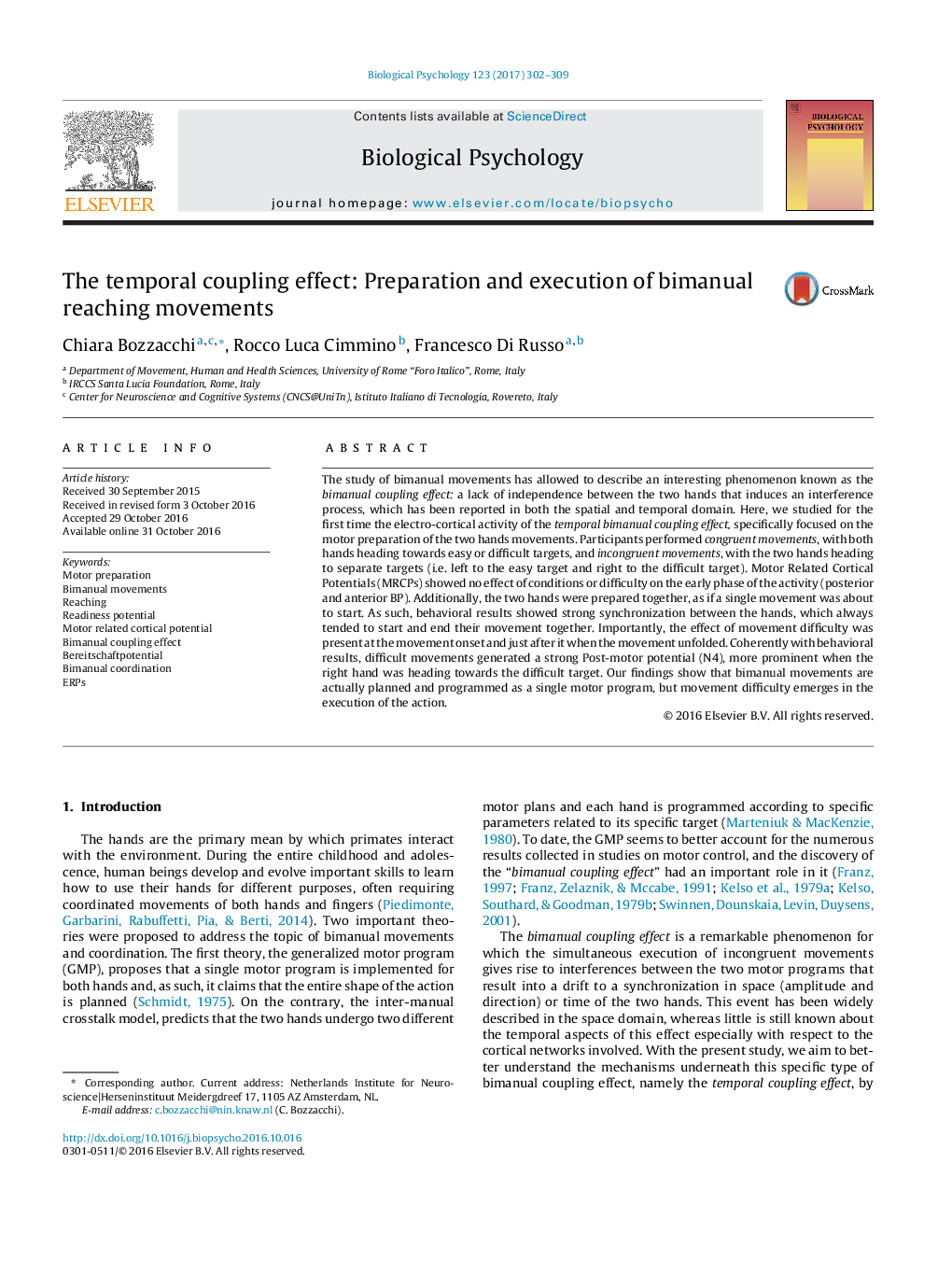| کد مقاله | کد نشریه | سال انتشار | مقاله انگلیسی | نسخه تمام متن |
|---|---|---|---|---|
| 5040551 | 1473851 | 2017 | 8 صفحه PDF | دانلود رایگان |
- The study represents the first ERPs investigation of the temporal coupling effect for bimanual reaching movements.
- Behavioral data confirmed the temporal coupling betweeen hands.
- No difference between hands was found in the ERP related to the movement preparation showing that bimanual actions are prepared as single movements.
- During execution, movements towards smaller and further targets produce stronger activity (MP and N4 components).
- The right hand shows a leading role in the movement and it induces a stronger activity regardless of the distance and size of the target.
The study of bimanual movements has allowed to describe an interesting phenomenon known as the bimanual coupling effect: a lack of independence between the two hands that induces an interference process, which has been reported in both the spatial and temporal domain. Here, we studied for the first time the electro-cortical activity of the temporal bimanual coupling effect, specifically focused on the motor preparation of the two hands movements. Participants performed congruent movements, with both hands heading towards easy or difficult targets, and incongruent movements, with the two hands heading to separate targets (i.e. left to the easy target and right to the difficult target). Motor Related Cortical Potentials (MRCPs) showed no effect of conditions or difficulty on the early phase of the activity (posterior and anterior BP). Additionally, the two hands were prepared together, as if a single movement was about to start. As such, behavioral results showed strong synchronization between the hands, which always tended to start and end their movement together. Importantly, the effect of movement difficulty was present at the movement onset and just after it when the movement unfolded. Coherently with behavioral results, difficult movements generated a strong Post-motor potential (N4), more prominent when the right hand was heading towards the difficult target. Our findings show that bimanual movements are actually planned and programmed as a single motor program, but movement difficulty emerges in the execution of the action.
Journal: Biological Psychology - Volume 123, February 2017, Pages 302-309
